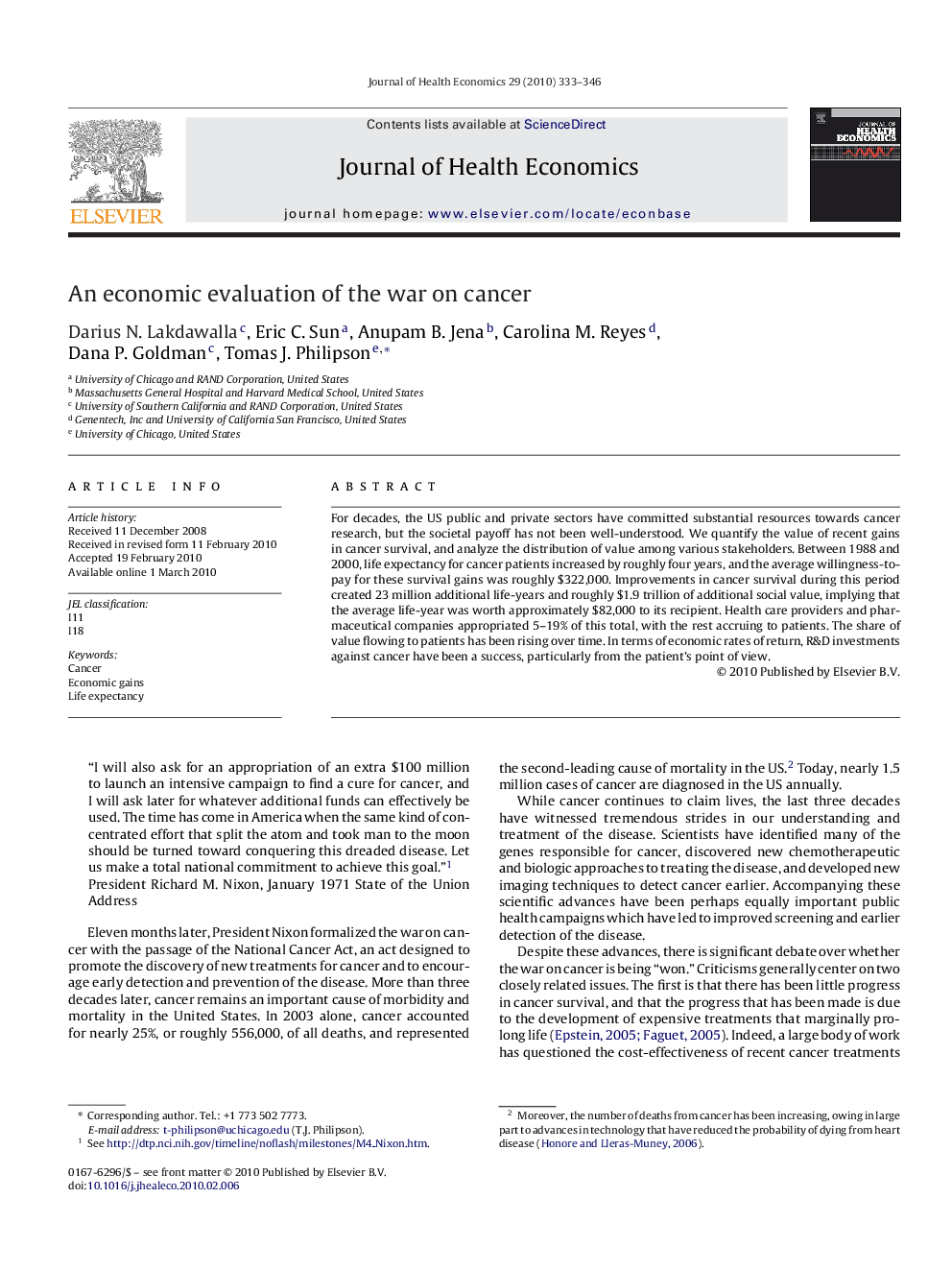| Article ID | Journal | Published Year | Pages | File Type |
|---|---|---|---|---|
| 961906 | Journal of Health Economics | 2010 | 14 Pages |
Abstract
For decades, the US public and private sectors have committed substantial resources towards cancer research, but the societal payoff has not been well-understood. We quantify the value of recent gains in cancer survival, and analyze the distribution of value among various stakeholders. Between 1988 and 2000, life expectancy for cancer patients increased by roughly four years, and the average willingness-to-pay for these survival gains was roughly $322,000. Improvements in cancer survival during this period created 23 million additional life-years and roughly $1.9 trillion of additional social value, implying that the average life-year was worth approximately $82,000 to its recipient. Health care providers and pharmaceutical companies appropriated 5-19% of this total, with the rest accruing to patients. The share of value flowing to patients has been rising over time. In terms of economic rates of return, R&D investments against cancer have been a success, particularly from the patient's point of view.
Keywords
Related Topics
Health Sciences
Medicine and Dentistry
Public Health and Health Policy
Authors
Darius N. Lakdawalla, Eric C. Sun, Anupam B. Jena, Carolina M. Reyes, Dana P. Goldman, Tomas J. Philipson,
